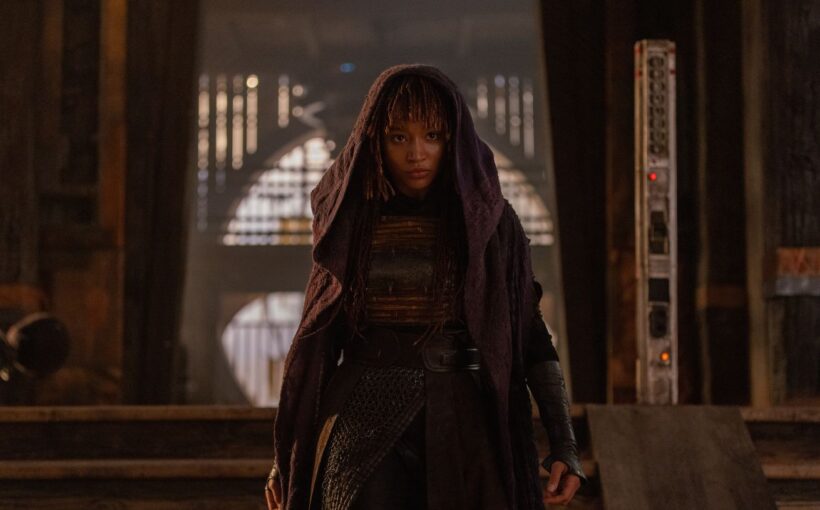
Star Wars has a tendency to feel small. Even as the franchise has expanded with shows like The Mandalorian and Andor, the stories remain connected in some way to Luke and Vader, the Empire and the Rebel Alliance, and other elements introduced in 1977. A universe that once seemed vast and full has steadily narrowed its focus. But the latest show, The Acolyte, has a good solution for this: winding back the clock 100 years. You don’t need to worry about the Skywalkers when they haven’t been born yet.
The show starts out as a whodunit, with a mysterious assassin targeting specific Jedi masters, killing them off one by one. Initially, all signs point to Osha (Amandla Stenberg), a former Jedi student who left the order because she was unable to let go of the grief of losing her twin sister, Mae. (No matter the era, the Jedi love to repress their emotions.) Eventually, Osha partners with her former master Sol (Squid Game’s Lee Jung-jae) to investigate, and as is the case with most murder mysteries, the further they probe into the killings, the larger the crime becomes. I won’t spoil things, but the reveal of the killer is not that hard to predict — and also probably the least interesting part of the mystery, which quickly grows in scope.
The Acolyte, which is helmed by showrunner Leslye Headland (Russian Doll), might be most notable for what it’s missing. Yes, the Jedi are a focal point, and they still have a temple on Coruscant, wield colorful lightsabers, and take promising young kids from their families to train. But outside of those Force-wielders, The Acolyte is largely free from the typical telltale signs of Star Wars. That means no Stormtroopers, no X-wings or TIE fighters, no Tatooine, and barely any droids (and certainly none as advanced as C-3PO). Because there is no Empire yet, there isn’t even a war in this Star Wars.
:format(webp)/cdn.vox-cdn.com/uploads/chorus_asset/file/25477050/PDX_004354_R3.jpg)
A galaxy at peace is a refreshing change of pace, and it allows The Acolyte to focus on its new sects and characters without all of the political machinations that can slow modern Star Wars down. That includes a coven of exiled witches who can wield the Force (but call it the Thread, since it connects all things) and dark Force users who train in secret under the tutelage of a new big bad so secretive even his pupils don’t know his identity.
The show even has a different look, with the technology dialed back to match the time period. Osha has a job as a freelance ship mechanic, for instance, because droids like R2-D2 aren’t common yet. Instead, her best bud is an adorable handheld tool that’s also a little bot named Pip. (It wouldn’t be a new Star Wars without a cute new droid.) Some of the changes and additions are purely superficial — one of my favorites is a convict that looks like a cyborg Cenobite from Hellraiser — but they all give the show just enough of its own distinct flavor.
For a show where the mystery is so key, that flavor is vital. It heightens the uncertainty. You know the main villain isn’t a returning figure or group because none of them exist yet. It’s not like Darth Maul is going to pop up unexpectedly. Instead, it’s the familiar Jedi investigating what seems to be an unfamiliar threat. For me — and I say this as someone who really enjoyed the likes of Ahsoka and Obi-Wan — it has made the Star Wars universe feel not only large again but also unpredictable in a way that I haven’t experienced in a long time.
Of course, it’s very possible the show isn’t able to keep this up. I’ve only seen the first half, and there are some big questions The Acolyte still needs to answer, which could alter how fresh it ultimately feels. But it’s off to a solid start, and hopefully the rest will show how rife with possibility this older era is. Maybe Star Wars will finally have a new story to build around.



